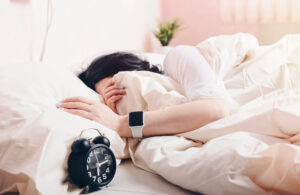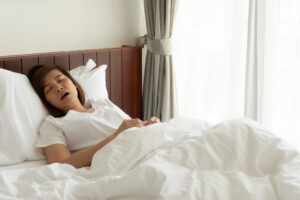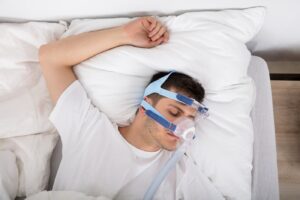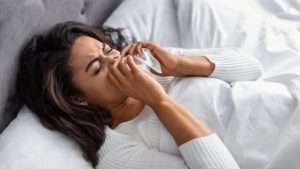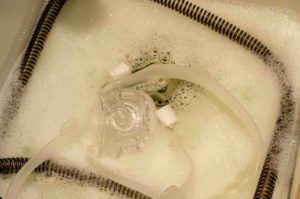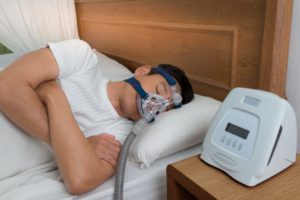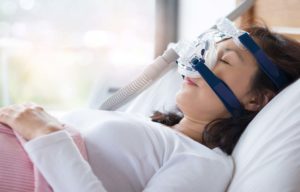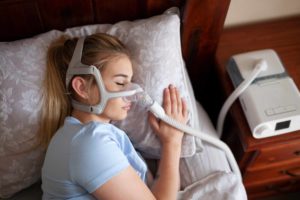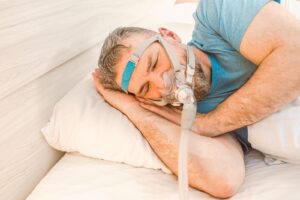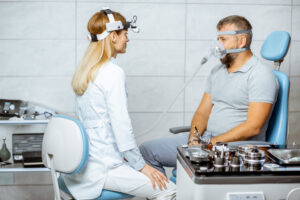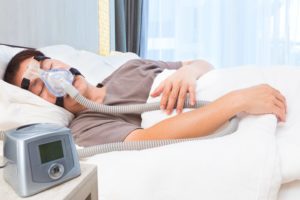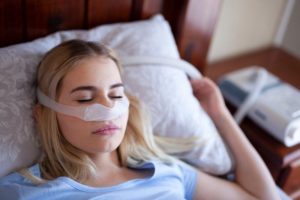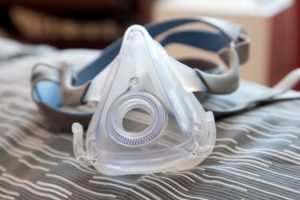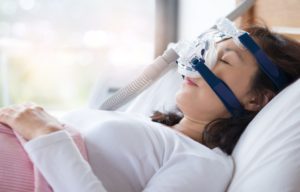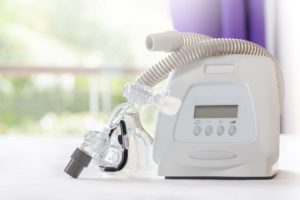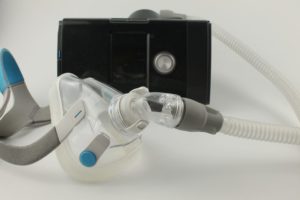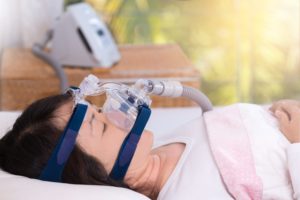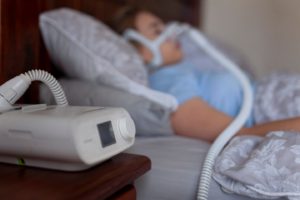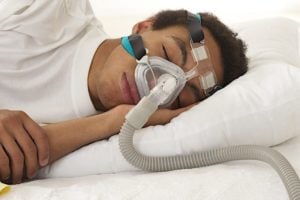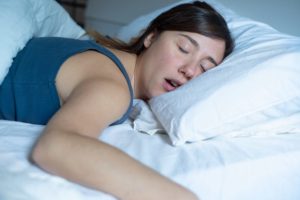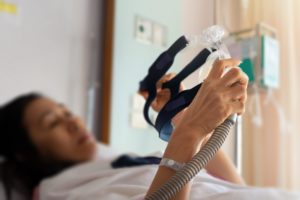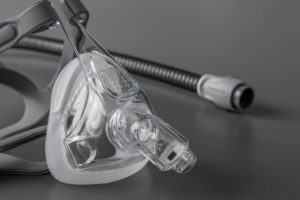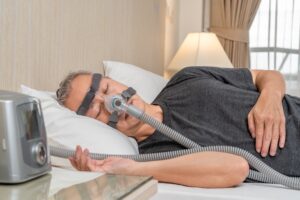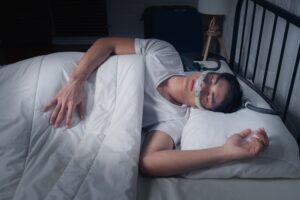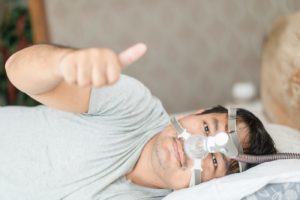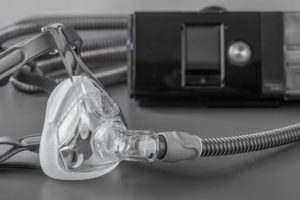When you buy through our links, we may earn a commission. Products or services may be offered by an affiliated entity. Learn more.
How to Choose a CPAP Mask Based on Your Sleep Position
- Selecting the right CPAP mask is important for making sure you get the most out of your CPAP therapy.
- When deciding on the most effective mask, consider your preferred sleep position, the way you breathe (nose or mouth), and other factors that can impact effectiveness.
- If you experience discomfort or difficulties with your CPAP mask, talk to your health provider to troubleshoot problems or determine if another style might be better for you.
Whether you’ve been using CPAP therapy for years or you’re just getting started, trying to get (and stay) comfortable in bed with an apparatus attached to your face and head can take some getting used to. It’s important that you choose the right mask to fit your face and breathing patterns, helping to ensure you get a restful night’s sleep with your CPAP machine.
Selecting the correct mask can be a matter of trial and error, and your doctor can help you try out different options and address any potential concerns. The right mask should offer a comfortable fit while providing effective treatment. Below, we’ll break down the various CPAP mask options and which sleep positions they match best with.

Exploring CPAP Masks — But Haven’t Been Tested Yet?
Start with our easy, at-home sleep test. It’s stress-free and effective. Get results within a few days.
Why Sleep Position Matters When Selecting a CPAP Mask
When you are diagnosed with Obstructive Sleep Apnea (OSA), the ideal outcome is to be able to comfortably breathe again so your body can properly rest and recover at night. However, in order to do that, you’ll have to be highly compliant with your prescribed CPAP therapy. You’re more likely to follow through if you can sleep comfortably, and mask choice can play an important role in that.
One of the key factors to consider when you’re selecting a CPAP mask is your preferred sleeping position. You’ll want to give your mask the best chance of staying in place and maintaining a good seal so air flows consistently. Some masks are designed to give you more freedom of movement while others offer more coverage to ensure airflow throughout the night.
The goal is to try to select a mask that is less likely to slip or move based on how you typically sleep, since that can lead to noisy air leaks and lower CPAP compliance.
The Best CPAP Mask for Your Sleep Position
The three most common CPAP mask designs are full-face, nasal, and nasal pillow masks:
- Full-face masks are the bulkiest, as they cover both the nose and the mouth.
- Nasal masks cover only the nose. They’re designed to go from the bridge of your nose to just underneath your nostrils.
- Nasal pillow masks are the least obtrusive. They only cover the nostrils and they don’t have a hard shell.
Since CPAP masks require a tight seal to avoid air leaks , sleeping in a way that presses on the mask can compromise your treatment’s effectiveness.
When choosing a CPAP mask, you should consider both the overall size and shape of the mask and where the headgear rests against your face. You want to find an effective mask that’s still comfortable during sleep.
CPAP Masks for Side Sleepers
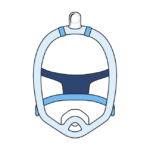
Sleeping on your side is one of the best positions for treating sleep apnea since it can prevent gravity from impacting your airway the way it does when sleeping on your back . Unfortunately, side sleepers sometimes struggle to find the right CPAP mask.
Nasal pillow masks are generally a suitable option for side sleepers. The low profile of the mask typically rests higher than the pillow itself, and the mask can keep its seal if the sleeper turns their face against the pillow. Nasal masks, which cover all or part of the nose, are another option for side sleepers to consider. An effective seal and soft, adjustable headgear can help prevent air leaks, but side sleepers may still require a CPAP-friendly pillow to accommodate their mask .
CPAP Masks for Back Sleepers
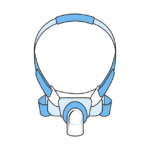
CPAP users who sleep on their back have their choice of mask styles since this position can accommodate even full-face masks without difficulty. While this may make sleeping on your back the best position if you use a CPAP mask, sleeping this way can also make it more likely for your airway to collapse due to gravity.
If your doctor is aware that you sleep on your back and has not encouraged you to change your sleeping position, you will likely be comfortable with any mask that is effective and fits any other needs you may have. The position also makes it difficult to dislodge your mask, though some back sleepers may struggle with single-strap headgear.
CPAP Masks for Stomach Sleepers
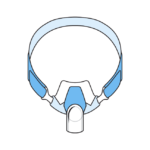
Stomach sleeping is the least common sleep position in CPAP users. People who sleep on their stomach also usually have unique concerns when choosing a CPAP mask. The position can cause most masks to press into the face, causing discomfort and frequent air leaks. Depending on the size of your mask, it may also force your head into a position that places stress on the neck and can cause next-day pain or stiffness.
Due to these factors, most people are only able to sleep on their stomach if they use a nasal pillow mask. The low profile of nasal pillows makes them ideal for this, as they are unlikely to become dislodged or cause pain regardless of sleep position.
However, even people who use a nasal pillow mask should ensure their actual pillow accommodates the mask. Some masks also have tube positioning along the temples, which may cause air restriction depending on your position and the firmness of your pillow.
Best CPAP Mask for Active or Combination Sleepers
People who tend to change positions throughout the night may also have a challenge finding the appropriate CPAP mask. What’s key here is choosing one that allows for movement, with less chance of the hose snagging or getting tangled up.
A good option may be a nasal CPAP mask with top-of-head tube or a swivel feature built into the design. Nasal pillow masks are another choice since they have a softer shell that allows for flexibility.
Other Considerations When Choosing a CPAP Mask
In addition to your sleeping position, you’ll also want to think about other factors that can impact your CPAP mask effectiveness and comfort.
Breathing Style
How you breathe is perhaps the most important factor when it comes to OSA and CPAP therapy since it can impact how effective the treatment is. It’s very common for people with OSA to be mouth-breathers, as well as people who have nasal congestion on a regular basis.
For people who tend to open their mouths during the night, you’ll want to select a full-face mask to ensure that airflow enters both the nose and mouth.
If you normally breathe through your nose, however, you can try using a nasal or nasal pillow mask, which may be more comfortable.
Facial Hair
Thick beards can make wearing a CPAP mask more challenging, since they can impact proper positioning and getting an effective seal. The best bet for someone who prefers not to shave off their whiskers is to try a nasal pillow mask since it sits just under the nostrils and has the least amount of contact with facial hair.
You can also try other mask types and experiment with liners and CPAP accessories that can help improve the seal.
Claustrophobia or Sensitivity
For people who might be uncomfortable wearing a full face mask because it makes them feel claustrophobic, it makes the most sense to start with a nasal pillow mask (the least obstructive type) and see if it can be tolerated. If that doesn’t do the job, you can see if moving to a nasal mask is more comfortable.
Pressure Settings
If your CPAP therapy prescription is for a high-pressure setting, you’ll want to choose a mask that can withstand stronger airflow without leaking. Most likely, that will mean going with a full face mask. A nasal mask can also work if you primarily breathe through your nose.
How to Know if Your CPAP Mask Fits Properly
So, how can you tell if your CPAP mask fits correctly if you’re asleep most of the time you spend wearing it?
Here are some signs that you have a good CPAP mask for your needs:
- You can move around comfortably in bed
- You mostly sleep through the night with very limited interruptions related to air leaks
- You don’t have any noticeable, lingering skin redness or irritations when you wake up in the morning
- You’re not waking up with an uncomfortable dry mouth
- You wake up feeling rested and restored
If your CPAP mask isn’t a good fit, these are some things you may notice:
- You get woken up by air hissing noises
- Your partner hears you snoring or gasping during the night
- You wake up with eye, nose, or mouth dryness
- You experience jaw pain or sore nostrils
- You feel exhausted during the day despite being in bed for several hours
It’s worth noting that if you have any of the above challenges, it doesn’t automatically mean you should try a different mask. You could potentially get a better fit by adjusting the straps for a better fit, or if you have skin sensitivity, you may find some relief using a liner. People who wake up feeling dried out may be able to adjust the humidity level on your machine. Of course, sometimes, you might have just had a bad night or two – it happens to everyone, CPAP users or not.
That being said, if you find that you’ve tried a few different strategies and adjustments and you still don’t feel like you’re getting the most from your CPAP therapy, it’s worth checking in with your doctor or provider to discuss alternative solutions.
Medical Disclaimer: The content on this page should not be taken as medical advice or used as a recommendation for any specific treatment or medication. Always consult your doctor before taking a new medication or changing your current treatment.

Still have questions? Ask our community!
Join our Sleep Care Community — a trusted hub of product specialists, sleep health professionals, and people just like you. Whether you’re searching for the perfect mattress or need expert sleep advice, we’ve got you covered. Get personalized guidance from the experts who know sleep best.
References
8 Sources
-
Genta, P. R., Kaminska, M., Edwards, B. A., Ebben, M. R., Krieger, A. C., Tamisier, R., Ye, L., Weaver, T. E., Vanderveken, O. M., Lorenzi-Filho, G., DeYoung, P., Hevener, W., & Strollo, P. (2020). The importance of mask selection on continuous positive airway pressure outcomes for obstructive sleep apnea. An official American Thoracic Society workshop report. Annals of the American Thoracic Society, 17(10), 1177–1185.
https://pubmed.ncbi.nlm.nih.gov/33000960/ -
A.D.A.M. Medical Encyclopedia. (2022, January 1). Positive airway pressure treatment. MedlinePlus.
https://medlineplus.gov/ency/article/001916.htm -
Kryger, M. H. & Malhotra, A. (2022, August 11). Management of obstructive sleep apnea in adults. In N. Collop (Ed.). UpToDate.
https://www.uptodate.com/contents/obstructive-sleep-apnea-overview-of-management-in-adults -
Schotland H. (2021). PAP therapy: Quick tips for troubleshooting to address problems with use. American Journal of Respiratory and Critical Care Medicine, 204(6), P11–P12.
https://pubmed.ncbi.nlm.nih.gov/34543160/ -
InformedHealth.org [Internet]. Cologne, Germany: Institute for Quality and Efficiency in Health Care (IQWiG); 2006-. Obstructive sleep apnea: Learn More – Treatment of obstructive sleep apnea. [Updated 2022 Dec 19]. Available from: https://www.ncbi.nlm.nih.gov/books/NBK279271/
https://www.ncbi.nlm.nih.gov/books/NBK279271/ -
Skarpsno, E. S., Mork, P. J., Nilsen, T., & Holtermann, A. (2017). Sleep positions and nocturnal body movements based on free-living accelerometer recordings: Association with demographics, lifestyle, and insomnia symptoms. Nature and Science of Sleep, 9, 267–275.
https://pubmed.ncbi.nlm.nih.gov/29138608/ -
Yi-Fong Su V, Chou KT, Tseng CH, et al. Mouth opening/breathing is common in sleep apnea and linked to more nocturnal water loss. Biomedical Journal. Published online May 10, 2022. doi:https://doi.org/10.1016/j.bj.2022.05.001
https://www.sciencedirect.com/science/article/pii/S2319417022000737 -
Deshpande, S., Joosten, S., Turton, A., Edwards, B. A., Landry, S., Mansfield, D. R., & Hamilton, G. S. (2016). Oronasal masks require a higher pressure than nasal and nasal pillow masks for the treatment of obstructive sleep apnea. Journal of Clinical Sleep Medicine, 12(9), 1263–1268.
https://pubmed.ncbi.nlm.nih.gov/27448430/


